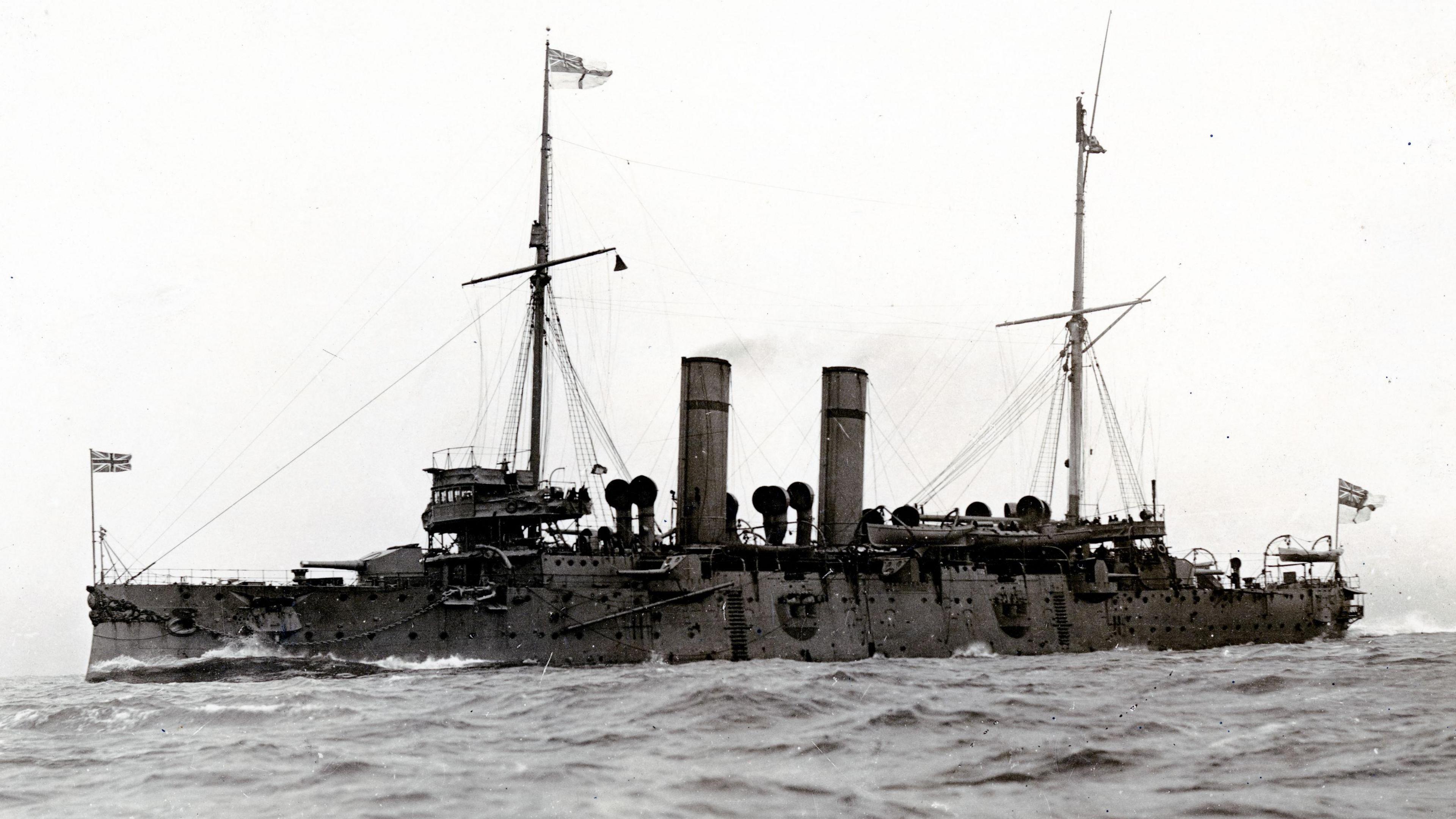World War One warship wreck discovered in Irish Sea
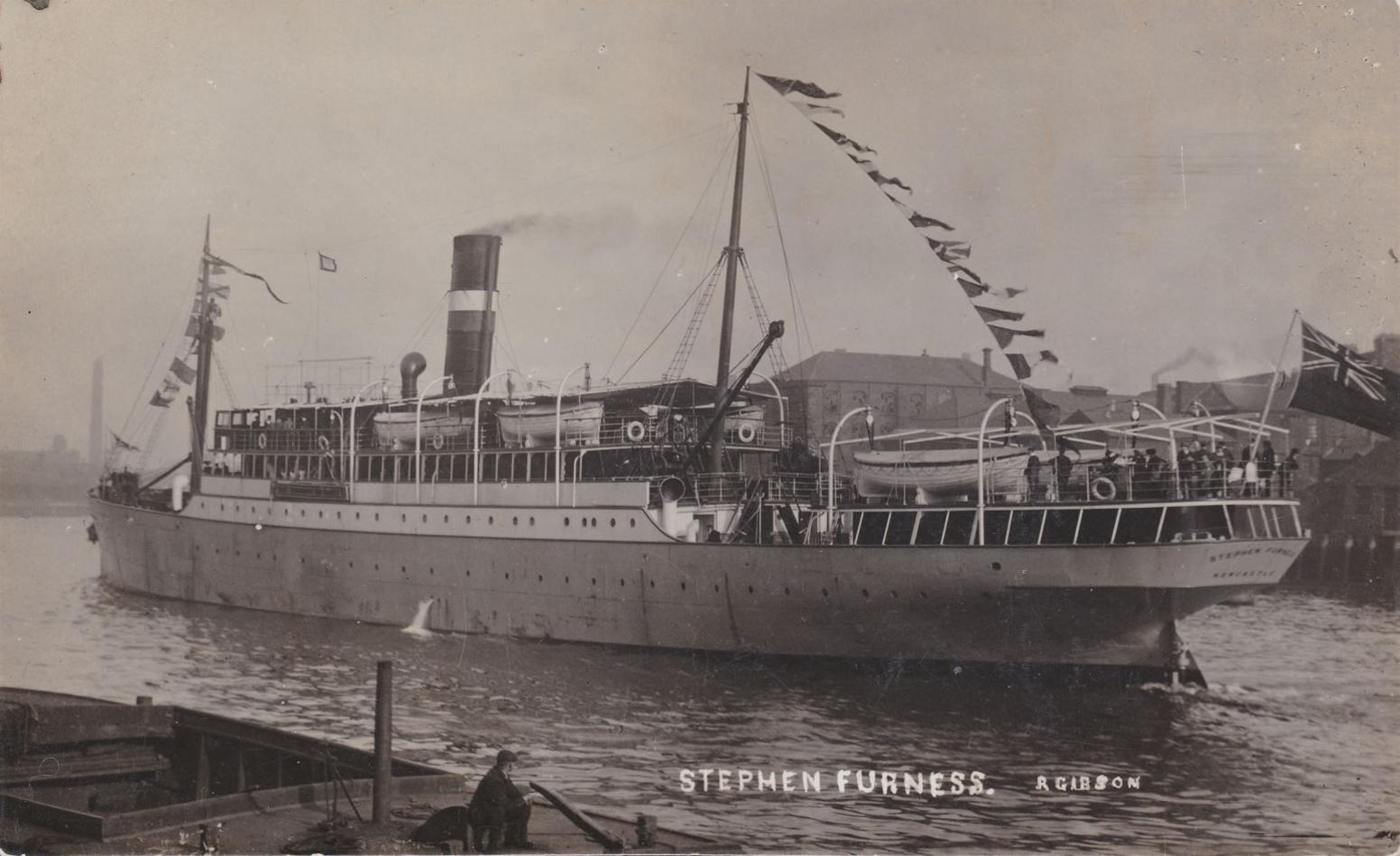
The warship sank in the Irish Sea after being torpedoed by a German U-boat in December 1917.
- Published
Researchers have identified the wreck site of a World War One warship after over a century at the bottom of the Irish Sea.
HMS Stephen Furness was struck by a single torpedo fired from UB-64 on 13 December 1917, and sank along with 100 crew members, with only 12 sailors surviving.
Researchers from Bangor University used high-resolution sonar data along with historical records to examine all known wreck sites in the region, which meant identifying the likely resting place of HMS Stephen became a comparatively straightforward exercise.
The team said the process could easily be replicated elsewhere.
The wreck laid at a depth of 90 metres (295ft) and about 10 miles (16.1km) east of the entrance to Strangford Lough in Northern Ireland.
It was previously considered to be the remains of a Swedish cargo vessel. the SS Maja, which was torpedoed with the loss of nine lives a month before the war ended.
The team believe they have located SS Maja's remains a few miles further south.
Piecing together all the evidence and information, the research team has not only been able to identify the likely resting place of the ship, but also reconstruct some tragic aspects of what followed.
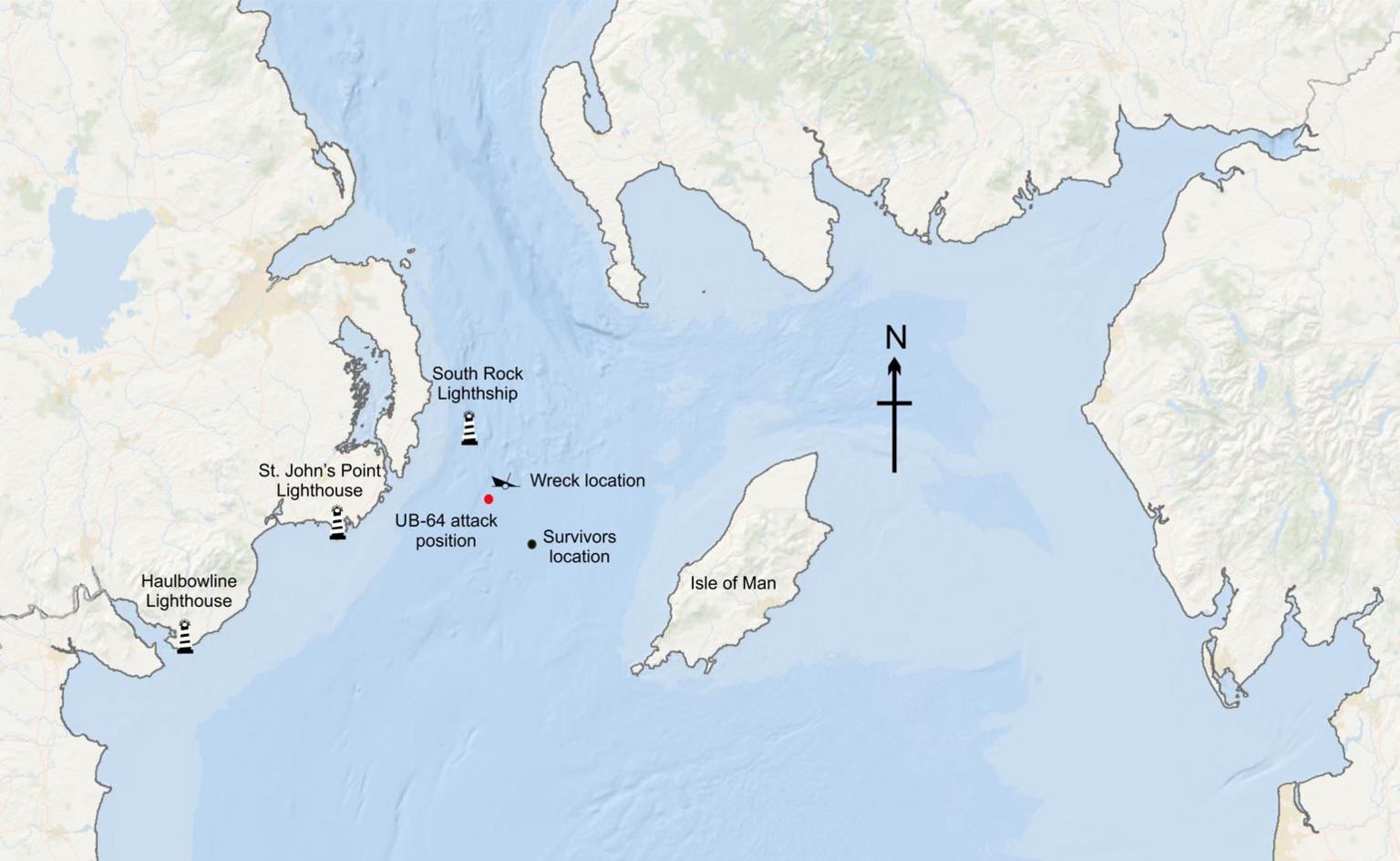
The wreck is about 10 miles east of the entrance to Strangford Lough in Northern Ireland.
The team found that on the afternoon of 13 December 1917, HMS Stephen Furness was in the northern Irish Sea heading for repairs in Liverpool when it was struck by a single torpedo fired from UB-64, which had been patiently stalking the Irish Sea for an opportunity such as this for several days.
The impact from the torpedo resulted in an explosion causing the vessel to sink within three minutes.
Since that day, until now, the location of the attack and final resting place of HMS Stephen Furness remained a mystery.
The team also found that about a month after the sinking, four of the crew who lost their lives during the attack were washed up along the coast of north Wales almost a hundred miles to the south.
Archived meteorological data was used to understand how this happened and to examine what might happen in other similar scenarios.
New information from this discovery will enable researchers to explore beyond simple narratives of blockade and U-Boat war, and engage directly with the people involved, the lives they led, and the sacrifices they made.
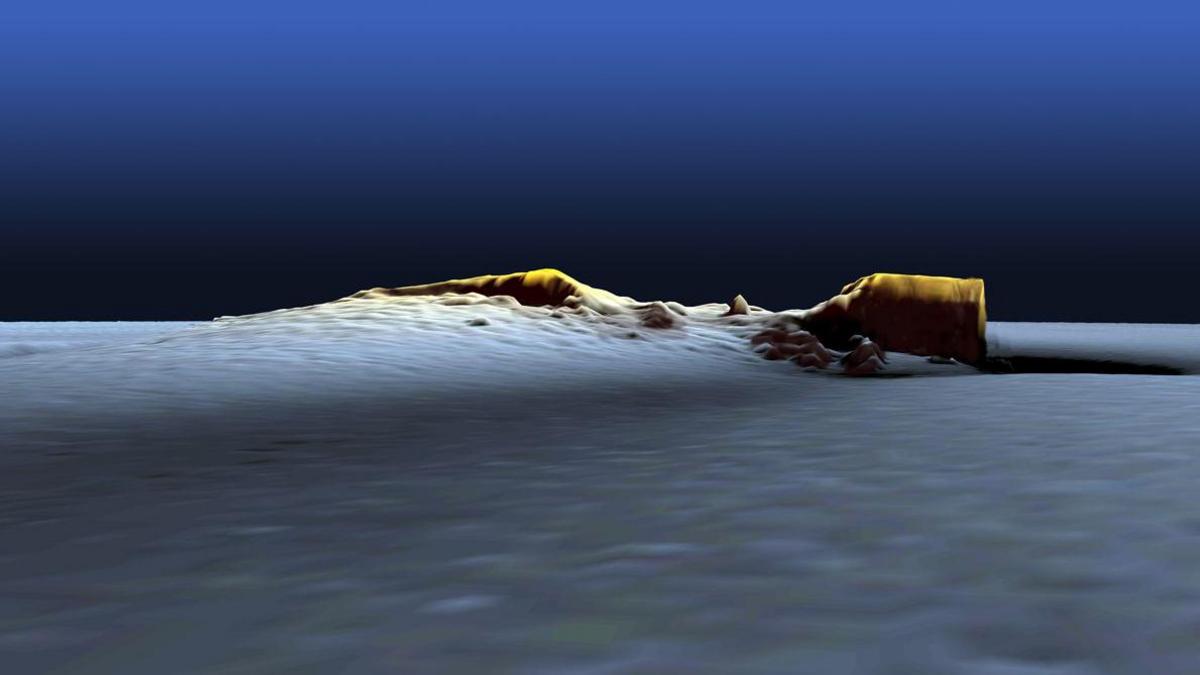
By combining sonar mapping, historical documents, and meteorological models, the team was able to reconstruct key aspects of the ship's final moments and its aftermath.
The discovery was part of a project called Unpath'd Waters, which has adopted new approaches to investigate shipwreck sites.
The team notified relevant authorities of the potential discovery to ensure the wreck is protected.
Dr Mike Roberts, Research and Development Manager at Bangor University's School of Ocean Sciences, said: "Overall, the research highlights our significant lack of understanding as to what most shipwrecks in UK waters actually represent, which is also a problem at the global scale.
"This project clearly demonstrates the incredible potential our disparate and different collections of information and material have when adopting a collective multidisciplinary approach."
Barney Sloane from Historic England said: "The likely identification of HMS Stephen Furness is a brilliant and moving example of the potential of the UK's maritime heritage data and a testimony to the Unpath'd Waters' team's collaboration and excellent detective work.
"This result is a remarkable example of just how important such an endeavor will prove to be."
Related topics
- Published11 February 2024
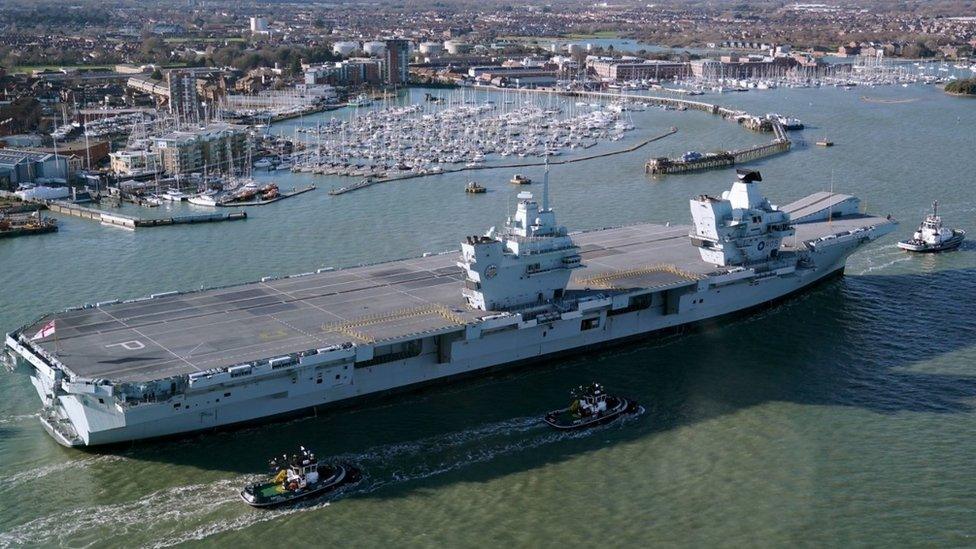
- Published12 August 2024
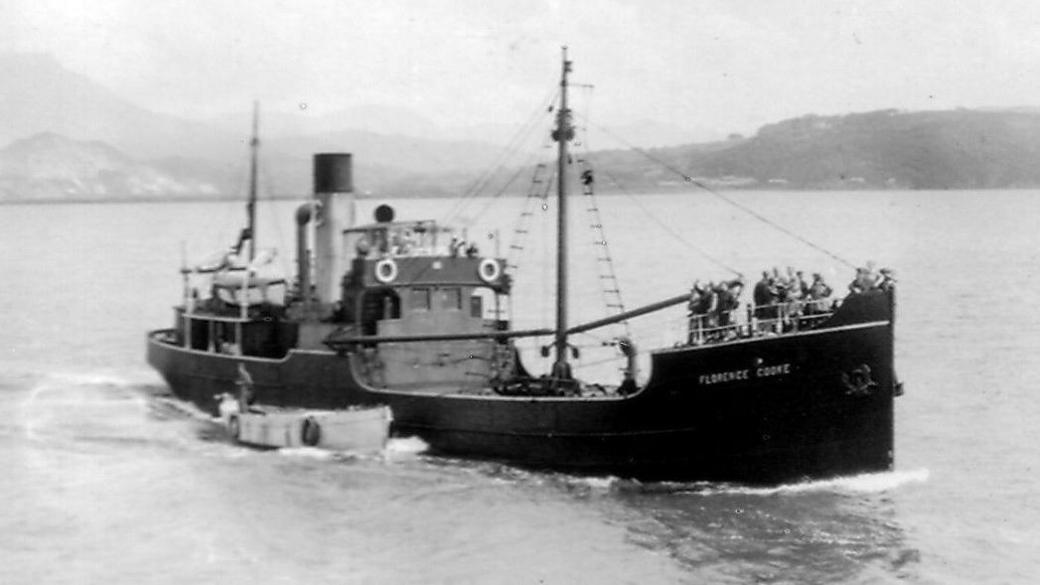
- Published16 August 2024
